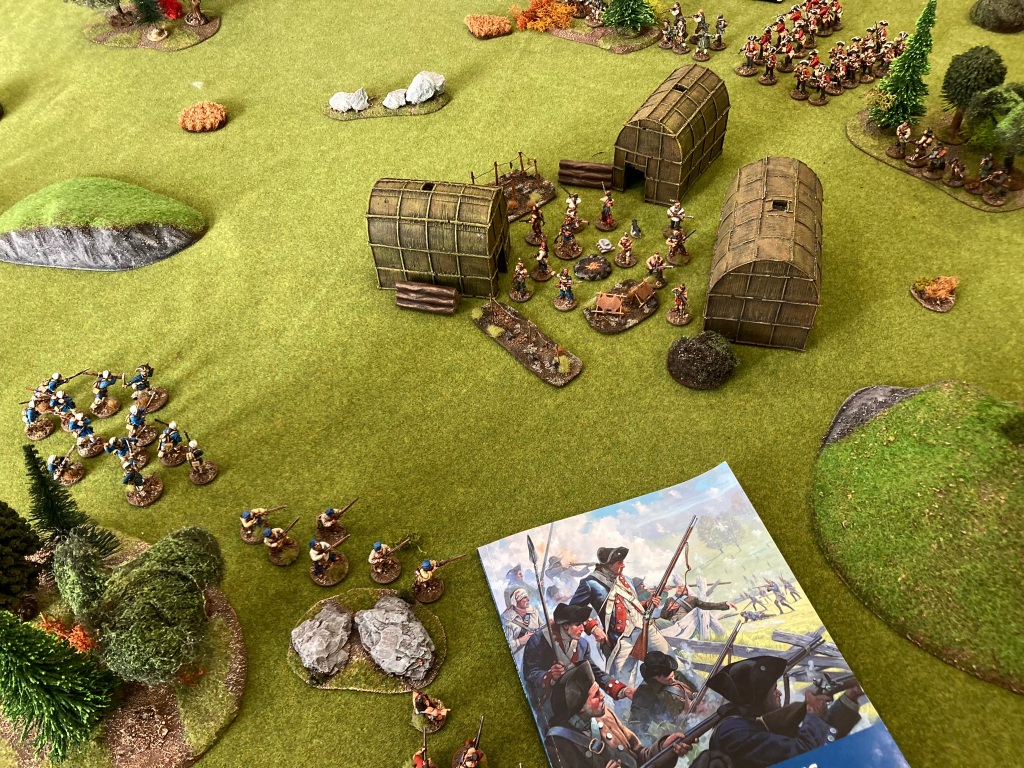
Rebels and Patriots is one of the rules sets that’s been sat on my shelf – unplayed – for years. I enjoy all the different variants that sprang out of Dan Mersey’s original Lion Rampant, but this was the only one I hadn’t tried. A quiet Sunday afternoon was just the time to sort that out!
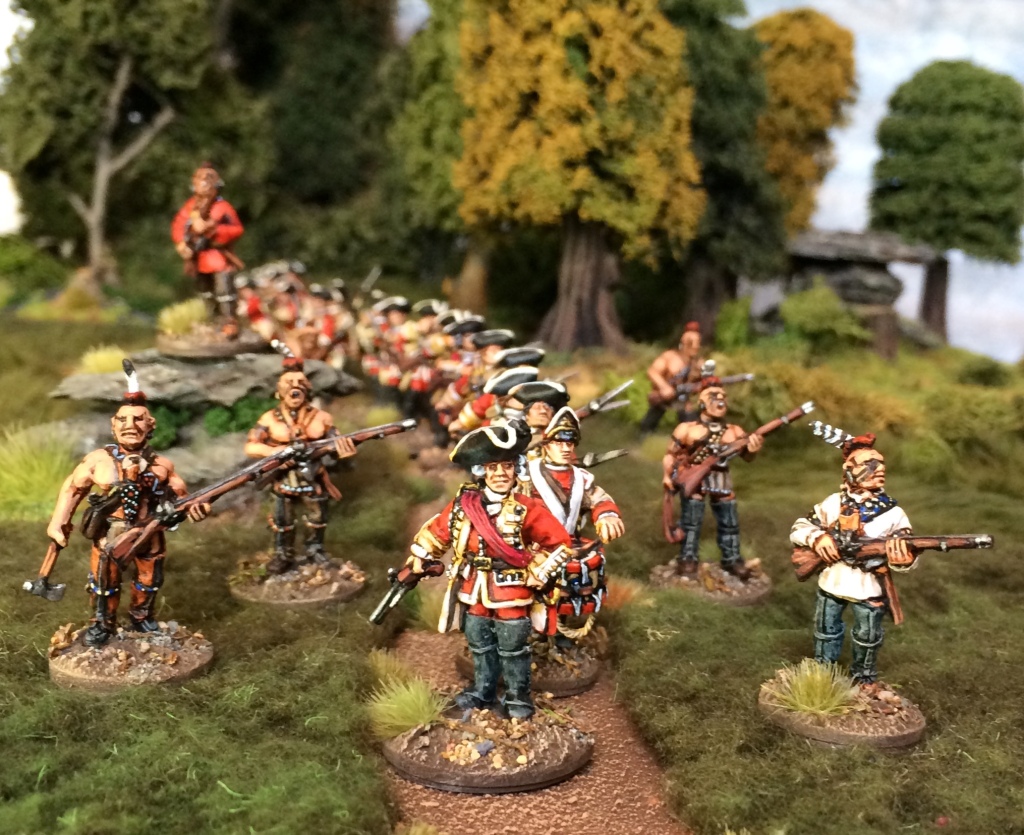
During lockdown, I collected two forces for Muskets & Tomahawks from Galloping Major miniatures with a view to adapting the rules to game the rather more obscure conflicts between the native Tlingit tribe of Alaska and Russian traders in the 1790s-early 1800s.

While I enjoy a bit of M & T, it was clear that it wasn’t going to work straight out of the box with two forces with similar composition. Every Tlingit unit would be classed as ‘Indians’ and activate on the same card, therefore producing a rush of activity all at once in the game; also, we experimented with Tlingit in a test game and found the close combat perhaps too deadly for this setting. These small issues were nothing that couldn’t be solved with some house rules, but I wasn’t sold on it for the Tlingit skirmishes.
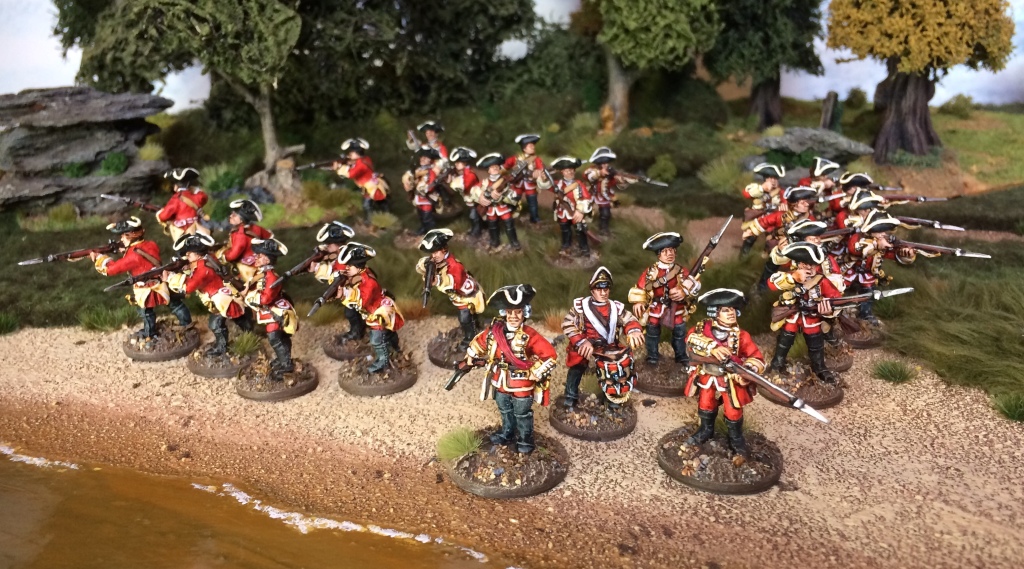
Rebels & Patriots is a 2019 Osprey collaboration between Dan Mersey and Michael Leck to game large skirmishes in North America in the 18th and 19th centuries. It uses the core ideas of the ‘Rampant’ series (skirmish units in ‘blobs’ with no facing, activation rolls on 2D6 per unit, leaders permanently attached to units, simple D6-driven combat and shooting, etc). However, each edition treats these slightly differently, and R & P is no exception. I’ll drop in some notes about these changes in the battle report below.
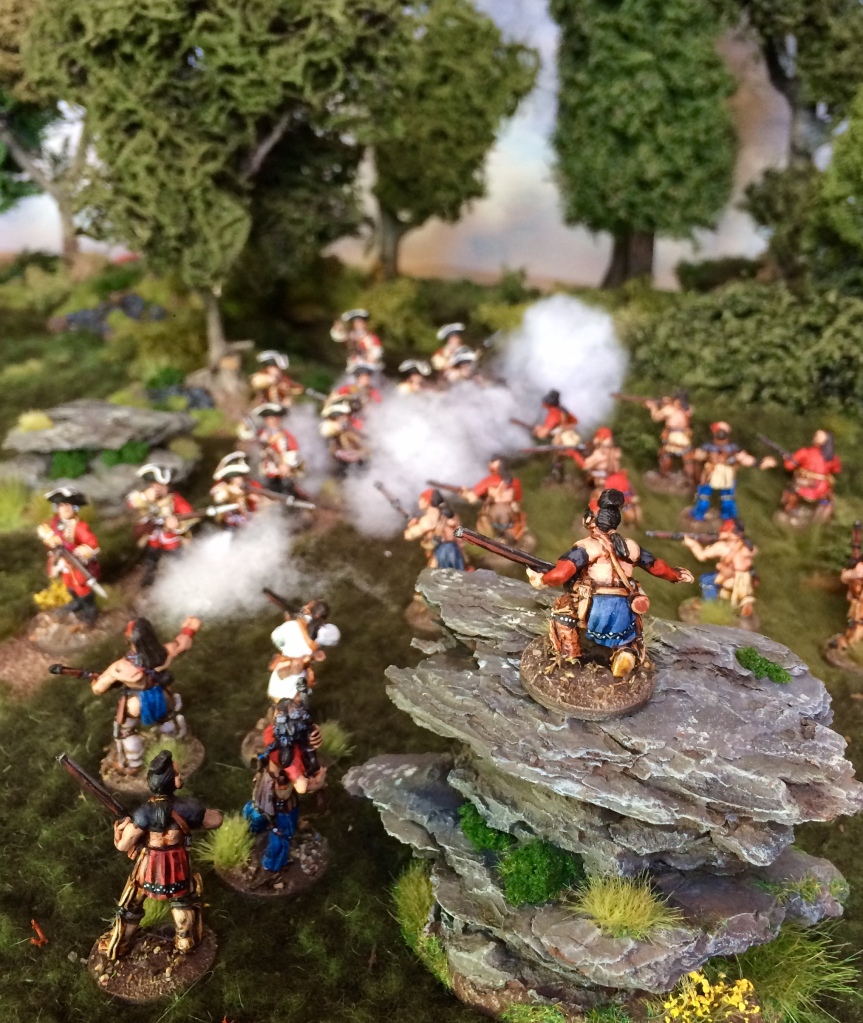
We generated two 24-point ‘companies’ for the game based mostly on my collection, of which Tom commanded the British and I took the French.
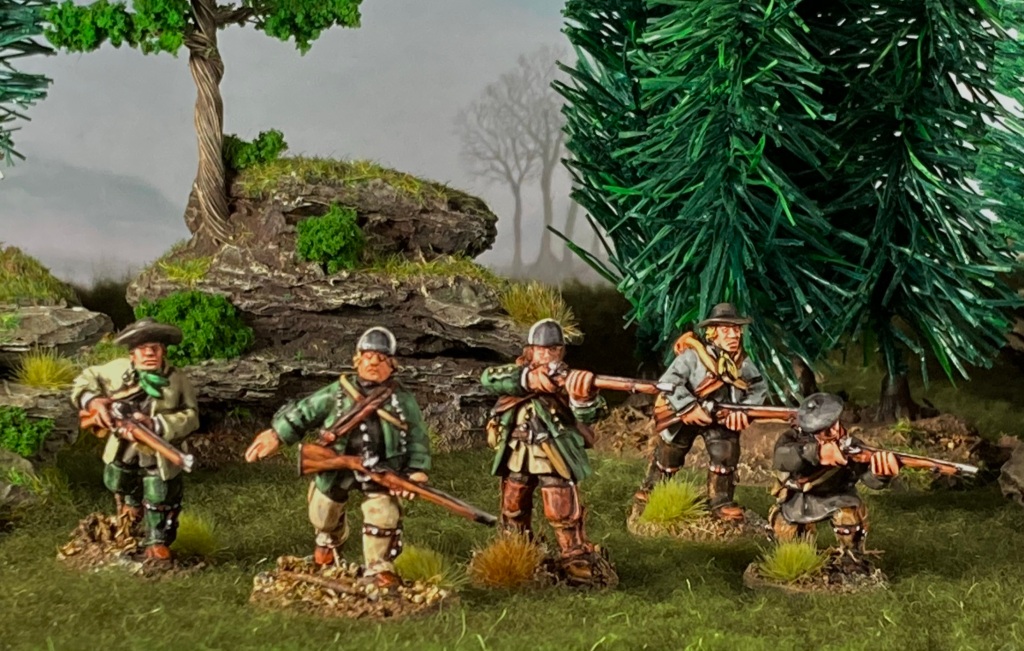
BRITISH
2 units of Line Infantry (12 figures each); Aggressive @5 points each
2 units of Skirmishers (Rangers, 6 figures each): Good Shooters, Aggressive @5 points each
2 units of Skirmishers (Militia, 6 figures each) @2 points each

2nd Lt Wensleydale commanded the British and rolled the special rule The Quartermaster’s Brother, meaning that his unit had gained extra ammunition for target practice and could reroll a failed firing dice each turn!
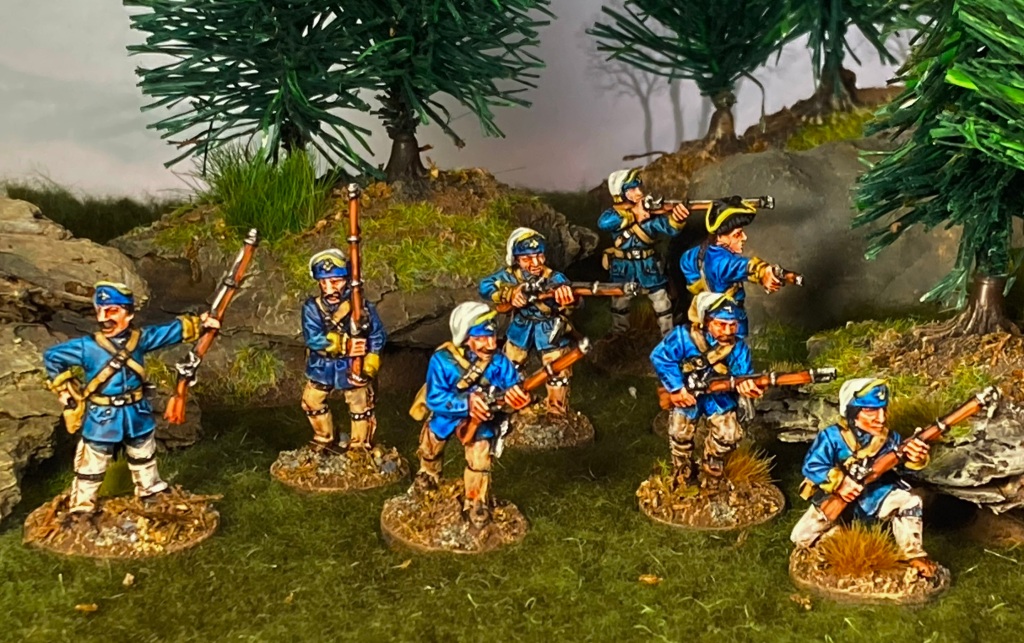
FRENCH
2 units of Compagnies Franches de la Marine (Light Infantry, 12 figures each) @6 points each
1 units of Canadien Militia (Skirmishers, 6 figures) : Sharp Shooters @6 points
2 units of Huron (Natives, small units, 6 figures each) @3 points each
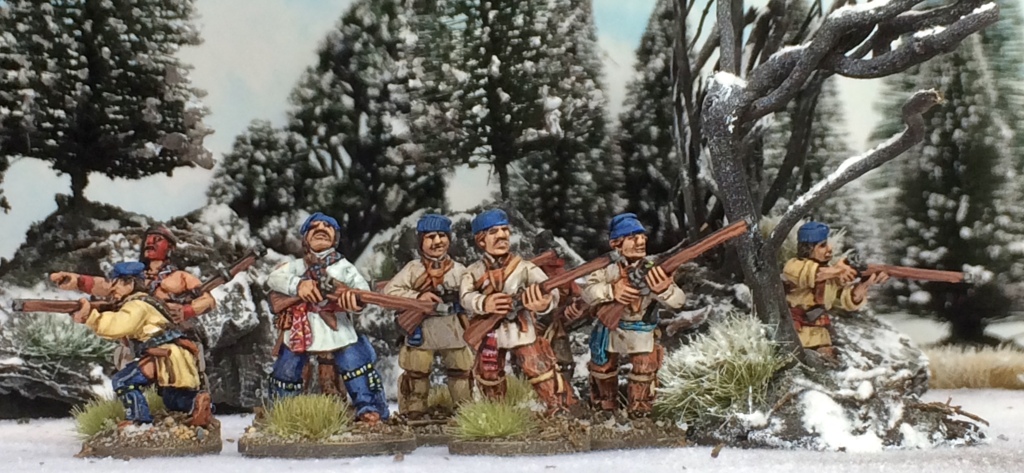
Commanding the French was Lt Roquefort. I rolled a magnificent double 6, meaning that his officer trait was Heroic Leader – a +2 bonus to all his leadership rolls, but a higher chance of getting shot! Perfect!

Playing the Scenario My Enemy’s Enemy from the R & P rulebook, we laid out a 4 x 4′ table with an Indian village in the centre and started in opposite corners. The village contained a unit of Natives that had not yet declared its allegiance but would do so as soon as a French or British unit approached within 6″
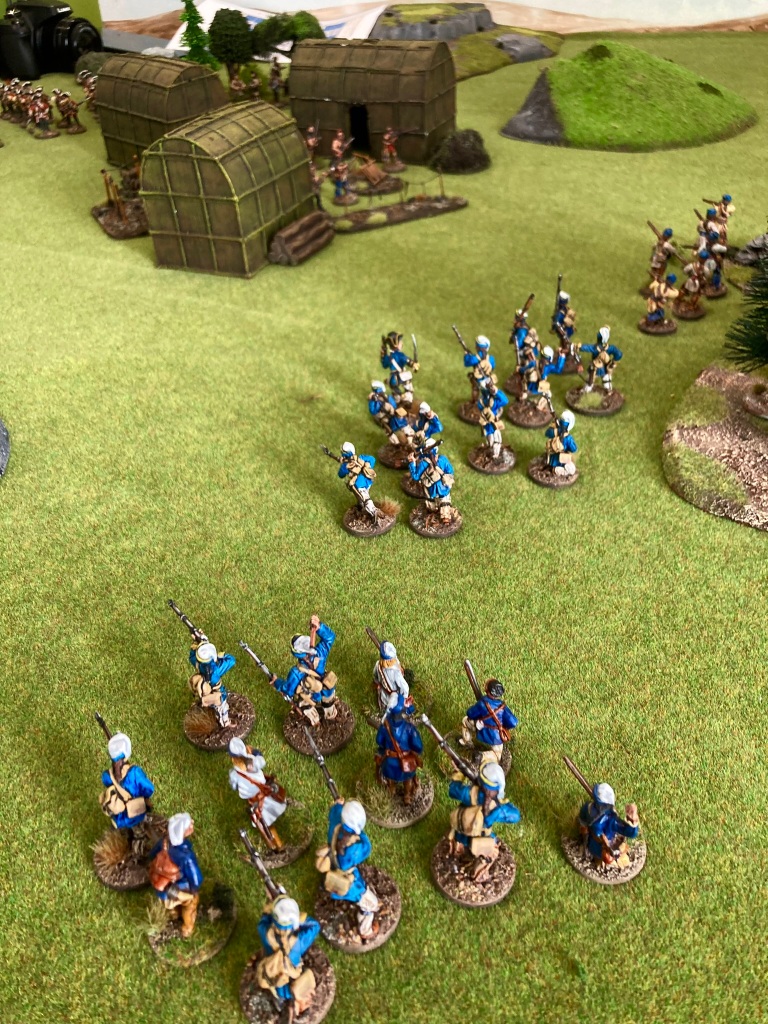
The first couple of turns whizzed by as we advanced on the village. One change to the Rampant series was that all units activated (and passed morale tests) on a 6+ on 2D6. This really speeded up play, without having to look up and down at command sheets to remember which unit activated on which roll.
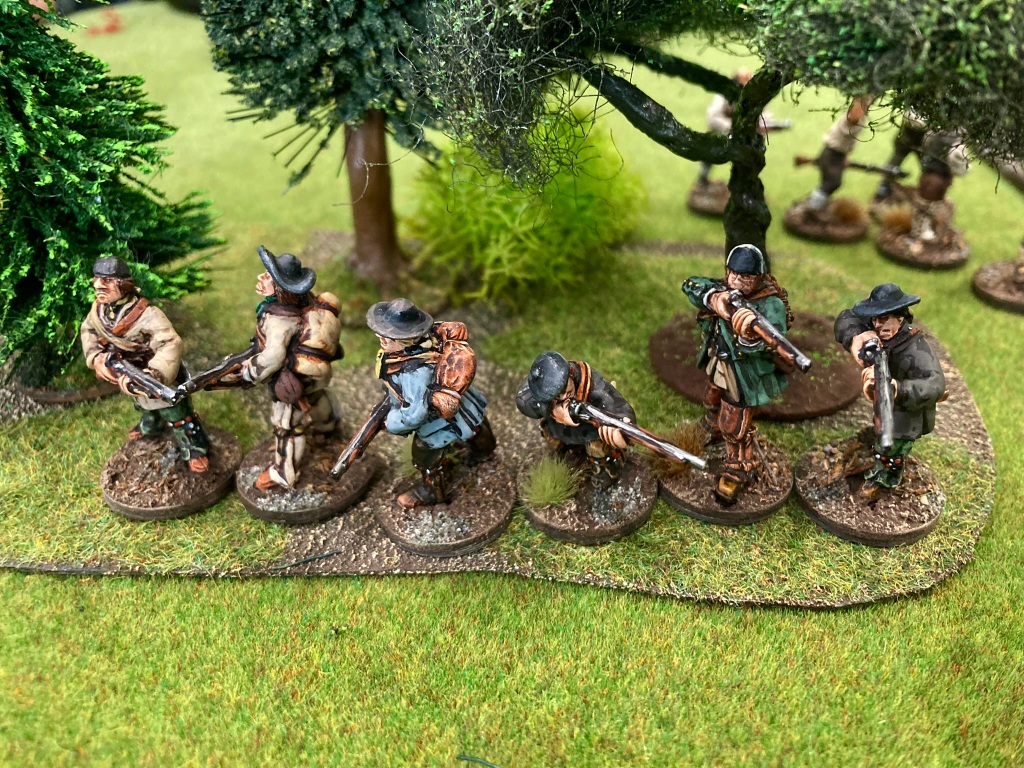
Like Dan’s colonial rules The Men Who Would Be Kings, R & P dispenses with the mechanism of failing an activation roll ending your turn. If you fail a roll, you simply move onto the next unit until all have had a chance to activate. Personally, I missed the comedy/ stress (delete as appropriate to your personality type) of failing an activation and passing play straight to the other side, but this gave a smoother game and would scale up to a larger number of units with ease ( something that Lion and Dragon Rampant don’t do well).
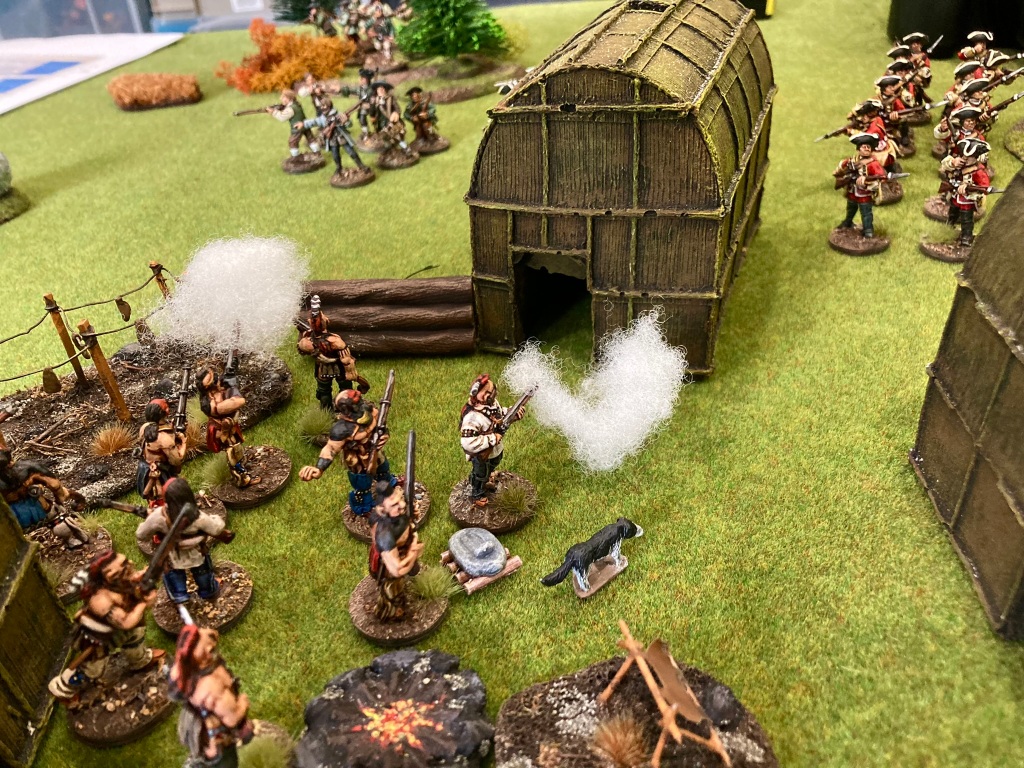
With a movement of 8″ and the bold leadership of Lt Roquefort, the French reached the village first. Fortunately, the locals turned out to be friendly (on a random dice roll) and agreed to open fire on the approaching British, resulting in Lt Wensleydale nearly getting toasted by a round of musketry.

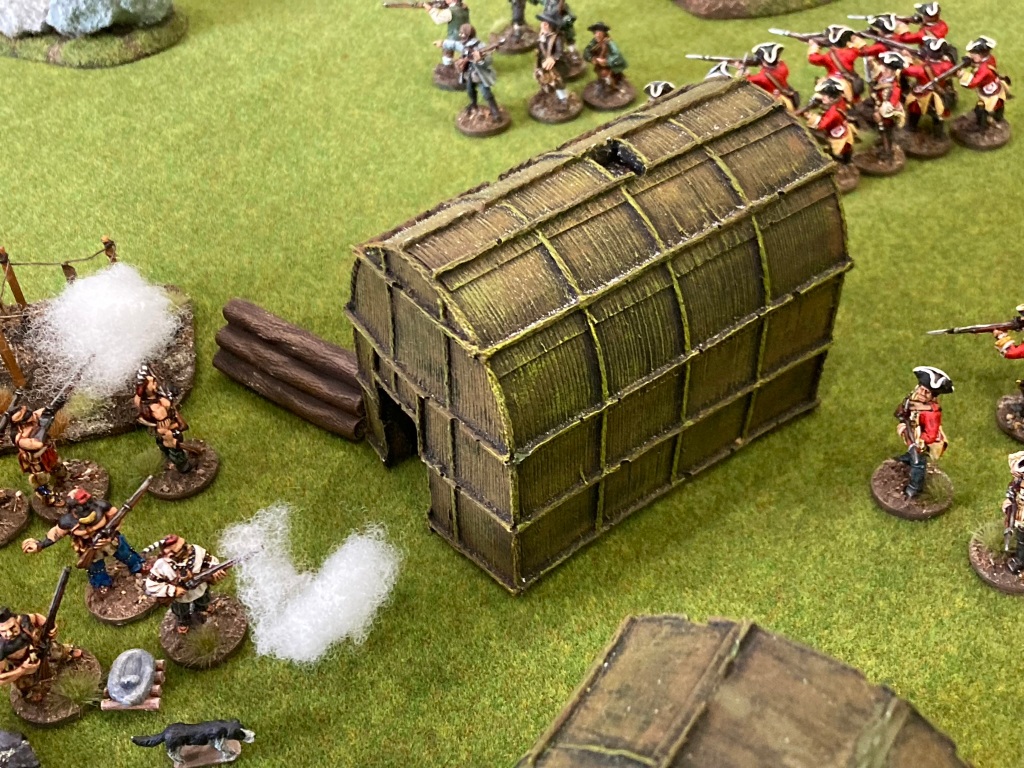
This made the redcoats hesitate. Wensleydale sent some of his Rangers round the side of the village, where they quickly found themselves under fire from Hurons working with the French.
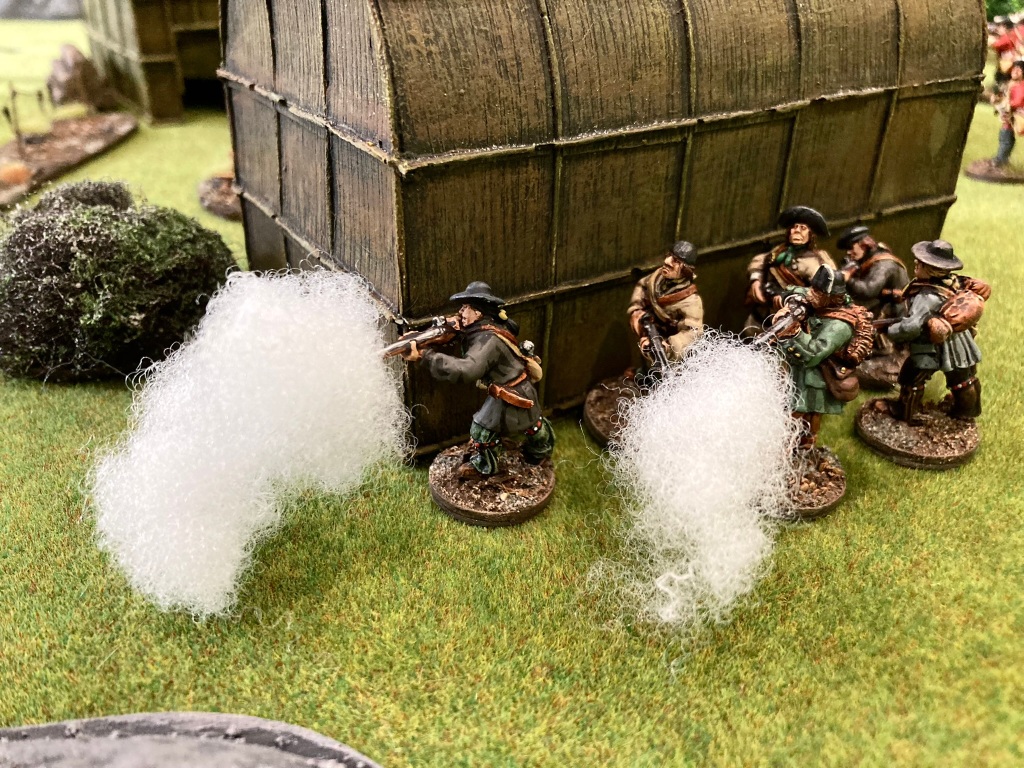
A British militia unit was sent in to pin down the Huron, who ended up pulling out their tomahawks with the expected effect. However, several casualties from the combat and return fire from the Rangers reduced the Huron to half strength, making them pretty much ineffectual for the rest of the skirmish.
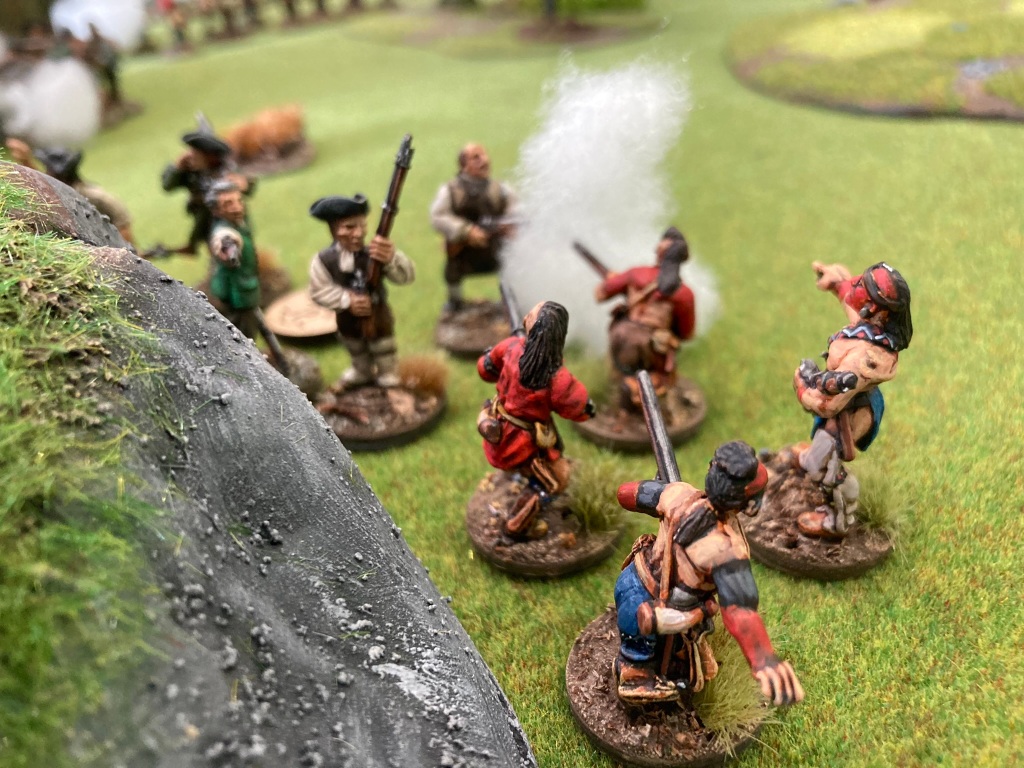
One of the changes to the Lion Rampant/ Dragon Rampant engine for R & P is the potential to have up to two Disordered markers following failed morale tests: one marker means the unit is disordered, two is broken and three is routed. This slightly more granular system means that units hang around longer, although can be quite ineffectual when damaged (especially if at half strength, when they have a Permanent Disorder marker that cannot be rallied off). It’s a nice touch, especially with games like this involving four or five units.
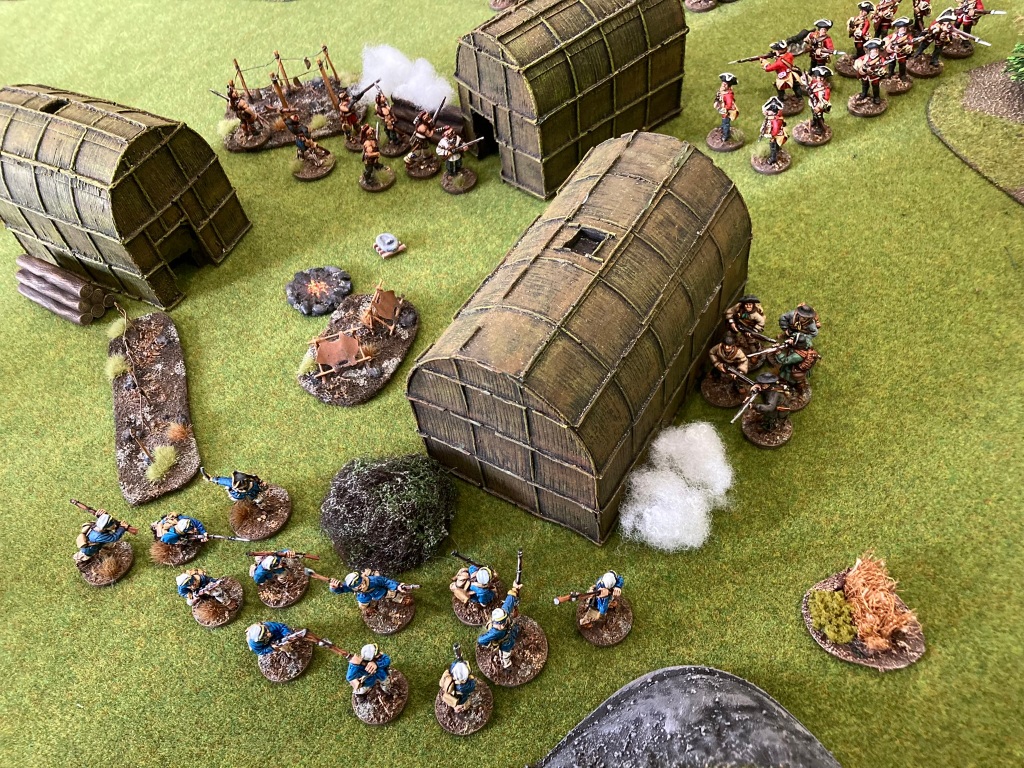
Another interesting mechanism to note here is that small units (6 figures) roll the same number of dice as standard units (12 figures), but are less resilient. This seemed to work really well, with the 12-figure units having far more staying power over the course of the game. INatives can also be fielded as large 18-figure units, giving a lot of options for tailoring units for particular games and settings.
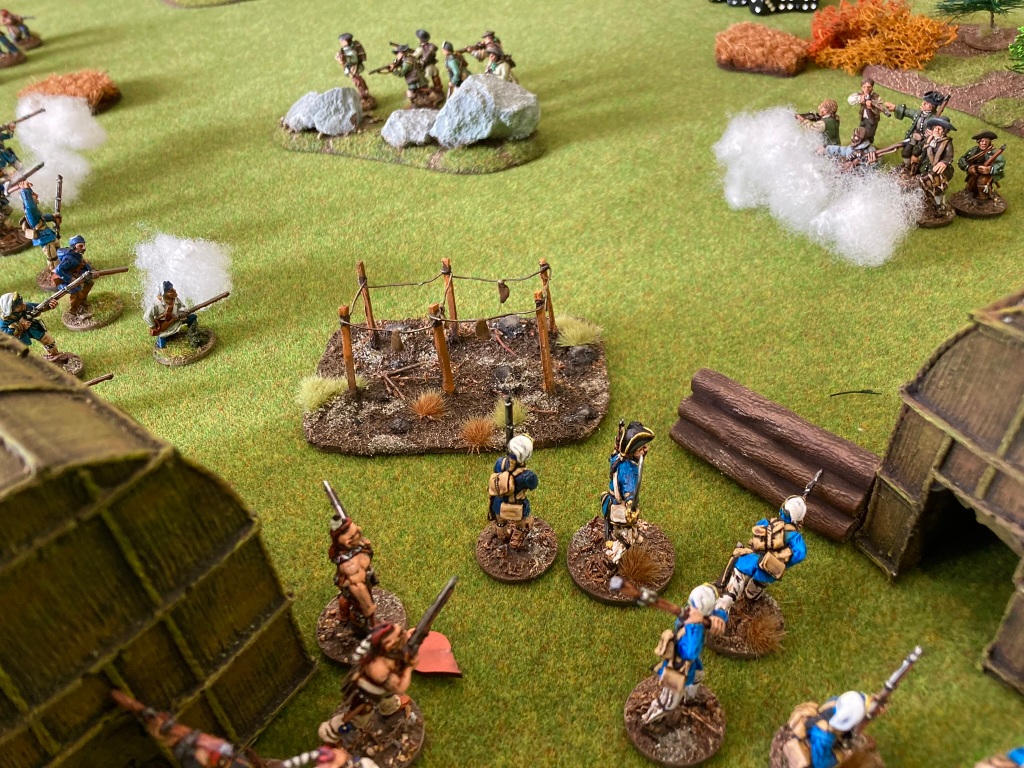
Unfortunately, the new French allies inside the village had now taken a drubbing from British fire and were forced to withdraw, being replaced by Lt Roquefort’s heroic Compagnies Franches.
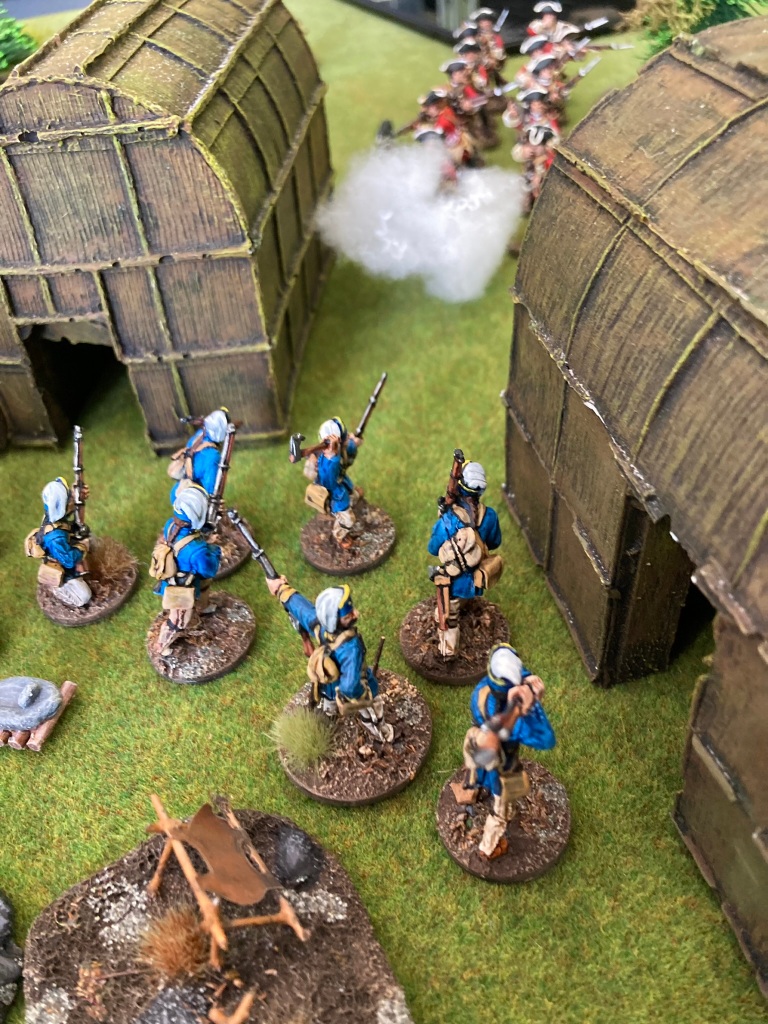
Faced with sterner opposition, the Redcoats took the obvious option and advanced with fixed bayonets into the village. The resulting melee drove the French back, but worse, our hero Roquefort was laid low! His Heroic Leader trait had kept his men moving in the early stages of the game, but now he paid the price.
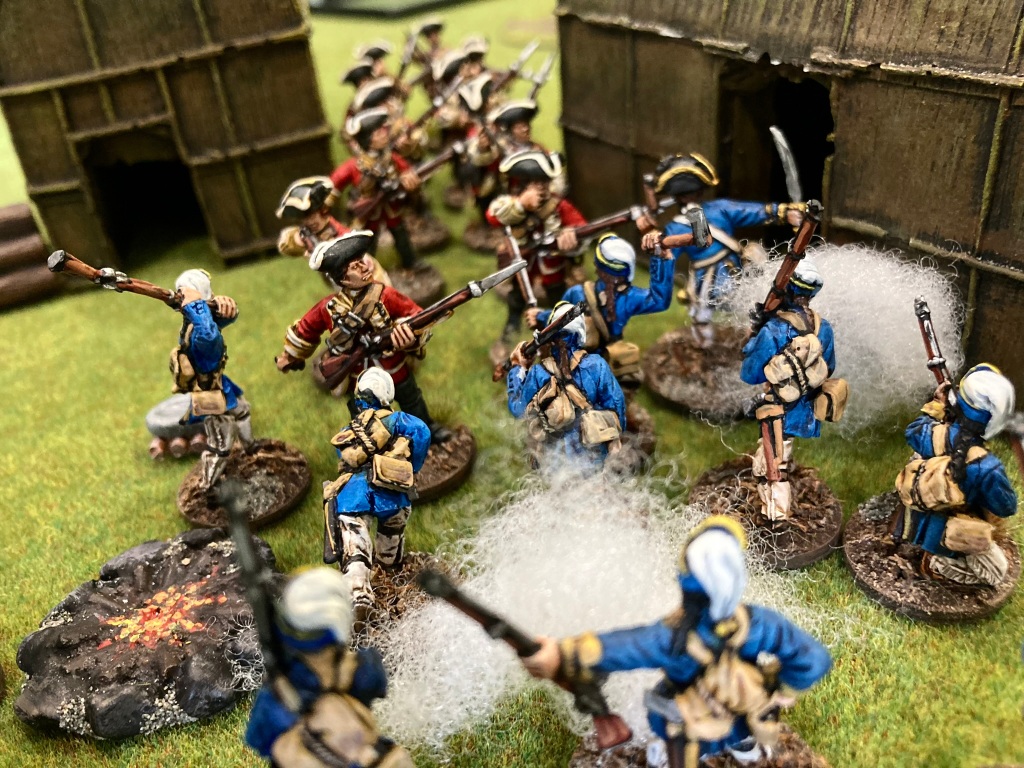
This transpired to be the turning point of the game. Without a leader adding +2 to all activation tests within 12″ (i.e. meaning that most units could activate on a 4+ on 2D6), the French were rudderless and failed a few critical activations that could have turned the tide.
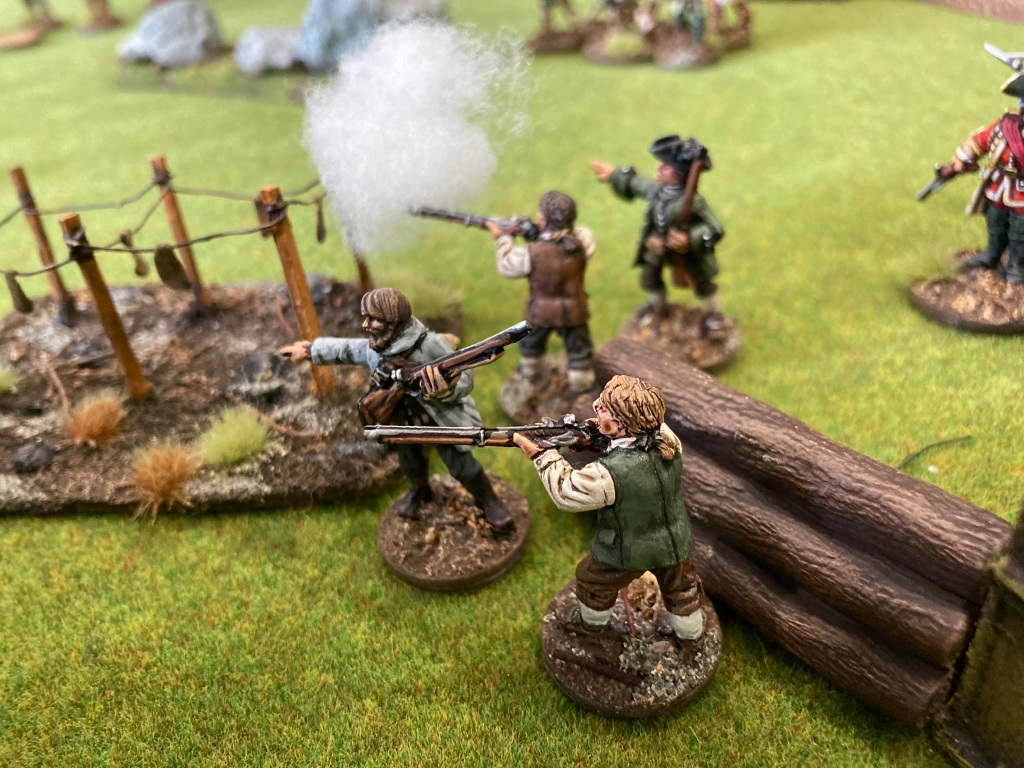
Nevertheless, we kept on playing as the French force was far from broken. The British militia jumped the woodpile and took position inside the village, while the depleted Redcoats drove off the remaining Indians and formed close order around the camp fire.

French attempts to get round the flanks were foiled by Rangers shooting at a distance and a number of cries of ‘merde!’ as they failed several activation tests. The Canadien Militia – so effective in the early stages of the game, with a range of 24″ and 4+ to hit – found themselves without targets due to the Redcoats moving into the village.
The Compagnies Franches attempted one more attack to drive the British out, but volley fire put paid to them, and the game finished after 9 turns with a win for King George’s men.

Overall, this was a thoroughly enjoyable game which cracked along at an excellent pace (assisted by the universal 6+ target number for activations and morale) . We really enjoyed the tweaks to the Rampant system, all of which felt very appropriate to this theatre. I was initially concerned that the ability of muskets to shoot every turn wouldn’t feel right, but we had our share of failed activations (clearly more powder being passed up the line) and low-level shooting (one clever feature of the Natives unit type is that they have to perform a Skirmish action to shoot, shooting with half their dice but being able to move as well). The option to field units at different sizes gives a great deal of flexibility and will probably make Rebels & Patriots a shoe-in for my forthcoming Tlingit project.
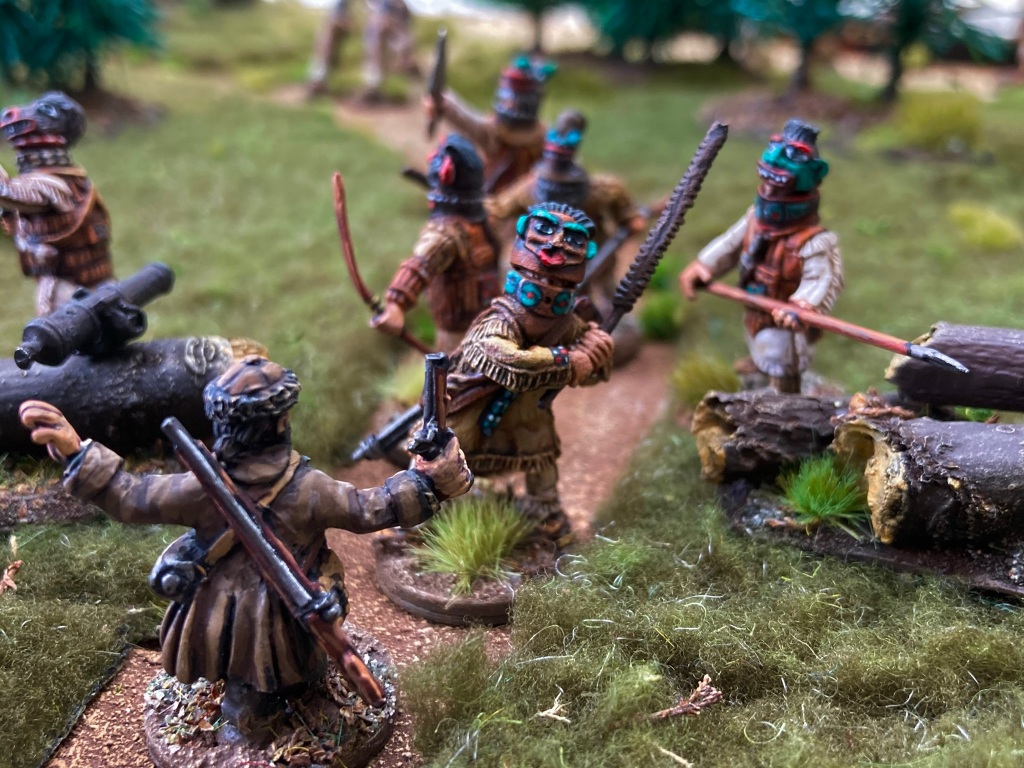
There was a bit of maths at the end (the usual trying to calculate 33% etc of units lost for morale purposes) but this didn’t detract from what had been an excellent game with plenty of memorable moments and chances for both sides to win. This rules set most certainly won’t be spending the next four years on the shelf!